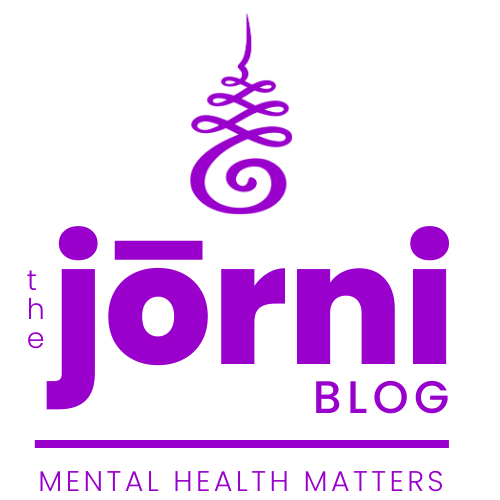The Wellness Gap We're Not Talking About
So many of us are following the wellness advice we’ve received. Our lab results look normal, and our daily routines seem to be exactly as recommended. From the outside, we appear to be doing everything right. Yet deep inside, something still feels persistently off. Not enough to stop us completely, but enough to wonder if feeling slightly exhausted, emotionally flat, and disconnected from our bodies is simply the new normal.
Too often, we measure women's health by productivity, achievements, and how well we manage to keep it all together. Performance earns praise, while presence and genuine connection to our bodies go unnoticed. When we share these subtle struggles, we’re often met with confusion, dismissive advice, or suggestions that barely scratch the surface. This isn’t just personal frustration; it points to a systemic gap in women’s health care.
This wellness gap appears in the form of vague yet persistent symptoms like fatigue, brain fog, irritability, mood swings, digestive discomfort, and unpredictable hormone fluctuations. These are rarely enough to raise red flags during routine medical visits, but they're enough to make everyday life feel like a constant effort. It’s time we recognize what's been missing and begin offering a deeper, embodied approach to women's health.
Redefining Health From the Inside Out
Allie Cass knows what it means to reach the pinnacle of physical achievement—and still feel unwell. As a pro-level physique competitor, she lived in a world that praised discipline and aesthetics, but ignored the toll it took on the nervous system. What looked like peak performance on the outside masked a deep disconnection on the inside. That dissonance became her turning point.

Her own burnout became the catalyst for change. Today, Allie works with high-achieving women who’ve been stuck in the same cycle—pushing, performing, perfecting—until their bodies can no longer keep up. Through a unique blend of functional nutrition, fitness, and neuro-linguistic programming, she helps them untangle from chronic stress and return to something deeper: true vitality.
Disconnection Disguised as Health
Not Sick but Not Thriving
Many of us aren’t medically unwell, yet we are far from thriving. We find ourselves repeating the same story: “I’m fine, but I don’t feel like myself.” We manage life mostly from the neck up, high-functioning, responsible, and capable, but internally, we feel emotionally numb and chronically exhausted. On the outside, nothing seems to be falling apart, which makes our struggle even more invisible.
Invisible Symptoms
Low-grade anxiety, mood swings, bloating, night sweats, and shifting PMS symptoms rarely trigger concern during brief medical consultations. Doctors often label these issues as simple stress or hormonal imbalances, leaving them unexplored. However, when we look closer, we see these subtle symptoms are signs of deeper nervous system dysregulation that standard lab tests typically won't detect until they're severe.

High Performance Comes with a Cost
The stronger and more capable we seem, the less visible our struggles become. Our culture rewards women who manage everything with ease and pathologizes slowing down. Eventually, this invisible cost catches up to our bodies. By the time others recognize our struggle, recovery can feel overwhelming or out of reach.
Wearing the Mask of “Fine”
Disconnection doesn’t always look like crisis; sometimes, it appears as competence. People rarely associate high-functioning women with burnout because we seem to have figured everything out. Yet beneath the mask of “fine” is a body operating under low-grade survival stress, numbing joy, intimacy, and rest. Until we start asking better questions, we will keep overlooking what's quietly happening right in front of us.
The Nervous System Is the Missing Link
Why Survival Mode Blocks Healing
We often talk about stress, but we rarely talk enough about the nervous system. When our bodies remain stuck in constant productivity mode, we lose the ability to genuinely rest and regulate. Our digestion becomes impaired, deep sleep is compromised, and our ability to feel pleasure, calm, and safety diminishes. Without nervous system safety, wellness routines feel temporary, never truly sustainable.
Soothing Instead of Pushing
We don’t need more tools that tell us to push harder. We need practices that honor exactly where our bodies are right now. That means making space throughout the day to slow down without guilt, choosing nourishment that calms our nervous system rather than inflaming it, and recognizing that rest is essential, not a luxury.

Symptoms as Signals
Without a foundation of nervous system safety, no wellness habit, whether it’s positive thinking, clean eating, or productivity strategies, will lead to lasting health. True safety comes from consistency, gentle self-care, co-regulation, and self-attunement. Until we establish safety, meaningful change feels threatening rather than supportive.
Why Safety Matters Most
If the nervous system doesn’t feel safe, no amount of positive thinking, clean eating, or high-performance habits will help. Safety isn’t created through control—it’s created through consistency, co-regulation, and self-attunement. Until we anchor that, change will feel threatening instead of supportive.
When the Medical System Says We’re Fine
One of the most frustrating scenarios in women's health happens when medical tests say everything is normal, despite feeling deeply unwell. The medical system typically measures obvious dysfunction, not subtle dysregulation. By the time our lab results confirm an issue, we may have been quietly suffering for years, leading us to doubt our intuition and self-awareness.

This scenario often makes us double our efforts. We tweak diets, take supplements, and perfect routines, yet we still end up exhausted. This happens because the medical system itself isn't designed to recognize subtle but meaningful signals. Healing truly begins when we trust our bodies more than external measurements, using medical tests as tools rather than absolute truths. This approach restores our sense of agency and control over our own wellbeing.
We’re Not Meant to Manage Alone
Breaking the Cycle of Self-Blame
When we don’t feel well and can't pinpoint why, self-blame often becomes the default reaction. Years of mainstream self-care messaging suggest if we're not thriving, it's because we’re not trying hard enough. This mindset traps us in endless cycles of overworking and striving, worsening the very symptoms we’re trying to fix.

Naming the Pattern
In the end, most struggles don’t happen because of a lack of motivation or discipline. The nervous system is stuck in survival mode, asking us for rest, repair, and genuine support. Once we recognize this, we can finally stop blaming ourselves and begin true healing.
Asking Better Questions
Instead of asking ourselves, “What’s wrong with me?” we can start asking, “What’s missing from the care I have received?” “What is my body trying to communicate?” “How might things shift if I began listening deeply instead of trying harder?” These questions can lead us somewhere deeply meaningful and restorative.

Community in Healing
Healing seems to take longer in isolation and our nervous systems thrive best in connection with friends, family, practitioners, and supportive spaces that welcome all of our experiences. Being believed and supported without diagnoses or judgment helps our bodies relax and softens resistance, making profound healing possible.
The Hormone-Stress Connection
Hormones are directly influenced by nervous system health. Even low-grade chronic stress can disrupt our hormonal balance, causing irregular cycles, low libido, and mood instability. Addressing hormones without addressing the stressors beneath them rarely resolves the issue. When we focus on healing stress and improving emotional safety, hormones often naturally stabilize.

Burnout That Isn’t Obvious
Burnout doesn’t always come with a big red flag or a crisis. Sometimes burnout looks like detachment, apathy, or overstimulation by things we used to enjoy. This subtle burnout often affects caregivers, high–achievers, and those who support others. Because we still function outwardly, no one notices we're quietly struggling inside.

Burnout signals sustained effort without adequate rest and recovery. Healing doesn’t mean abandoning our responsibilities, which is rarely feasible. It means redefining rest, repair, and worthiness, and placing them at the core of how we live our lives.
The TAKEAWAY
We have spent too long measuring women's health by the routines, energy, and achievements we can maintain, instead of by how we actually feel. Real wellness means slowing down enough to ask ourselves honestly what our bodies need, and being courageous enough to hear the answer, even if it goes against popular advice.
The missing links in women's health aren’t unsolvable mysteries. They're consequences of a system that overlooks subtle symptoms, praises resilience over rest, and treats our bodies as machines rather than living beings. Naming what's been missing helps us reclaim the power to define health for ourselves.

We don’t need another rigid wellness protocol. We need presence. We don’t need to chase another ideal. We simply need to reconnect with what’s already within us and honor our bodies that speak quietly but persistently, waiting patiently for us to listen. This is our shift from managing symptoms to reclaiming connection, from surviving to truly inhabiting our lives, and from silence to empowered agency. We are no longer settling for being overlooked; we're reclaiming the right to define wellness on our own terms...


